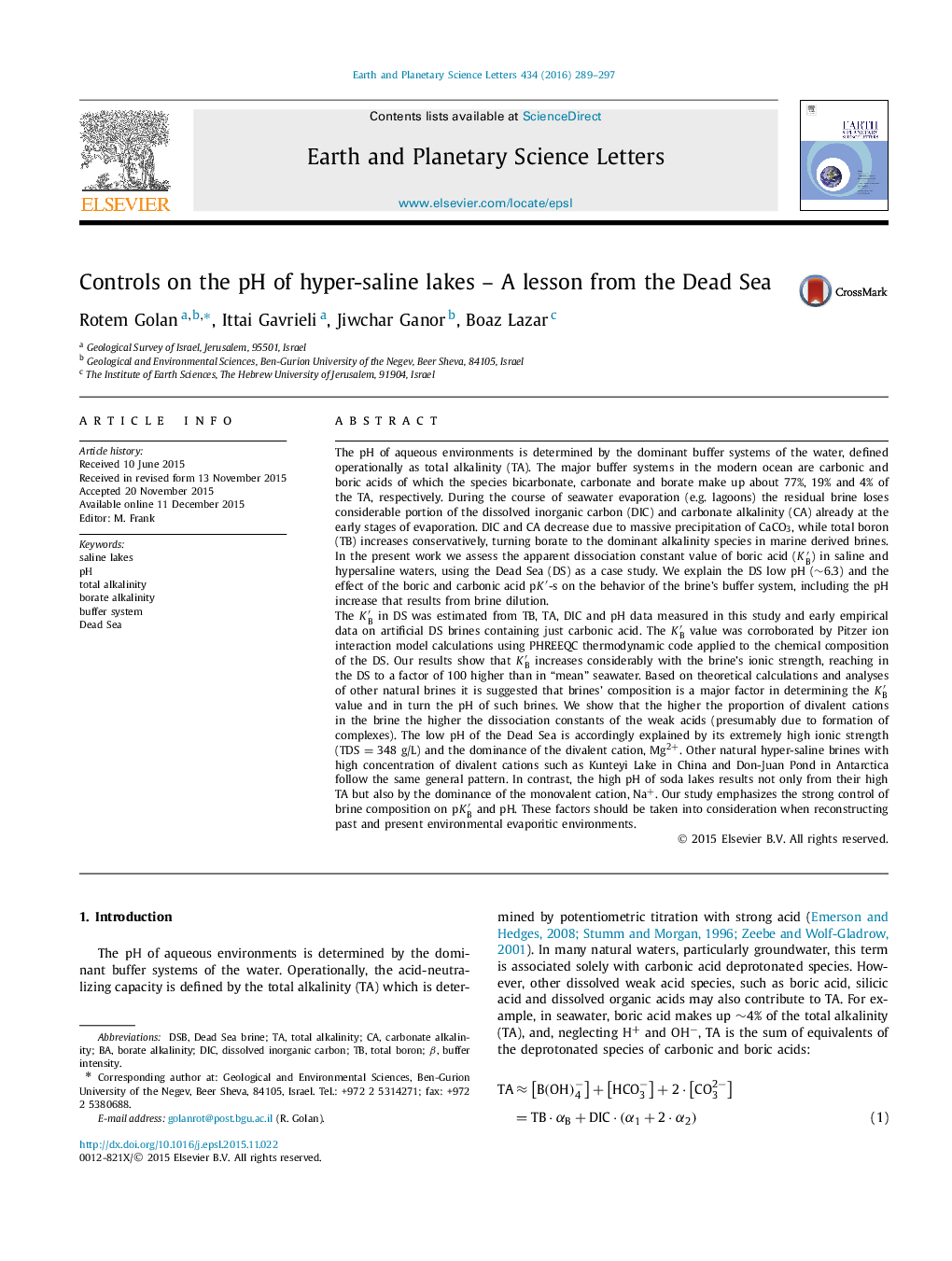| کد مقاله | کد نشریه | سال انتشار | مقاله انگلیسی | نسخه تمام متن |
|---|---|---|---|---|
| 6427752 | 1634722 | 2016 | 9 صفحه PDF | دانلود رایگان |

- The salinity and major ion composition of hypersaline brines control their pH.
- Borate is the major buffer in marine derived brines such as the Dead Sea.
- Week acids dissociation constants in brines are much higher than in seawater.
- Borate comprises â¼60% of the buffer system of the Dead Sea.
- The PCO2 of the Dead Sea remained very high (â¼1800 μatm) over the past decades.
The pH of aqueous environments is determined by the dominant buffer systems of the water, defined operationally as total alkalinity (TA). The major buffer systems in the modern ocean are carbonic and boric acids of which the species bicarbonate, carbonate and borate make up about 77%, 19% and 4% of the TA, respectively. During the course of seawater evaporation (e.g. lagoons) the residual brine loses considerable portion of the dissolved inorganic carbon (DIC) and carbonate alkalinity (CA) already at the early stages of evaporation. DIC and CA decrease due to massive precipitation of CaCO3, while total boron (TB) increases conservatively, turning borate to the dominant alkalinity species in marine derived brines. In the present work we assess the apparent dissociation constant value of boric acid (KBâ²) in saline and hypersaline waters, using the Dead Sea (DS) as a case study. We explain the DS low pH (â¼6.3) and the effect of the boric and carbonic acid pKâ²-s on the behavior of the brine's buffer system, including the pH increase that results from brine dilution.The KBâ² in DS was estimated from TB, TA, DIC and pH data measured in this study and early empirical data on artificial DS brines containing just carbonic acid. The KBâ² value was corroborated by Pitzer ion interaction model calculations using PHREEQC thermodynamic code applied to the chemical composition of the DS. Our results show that KBâ² increases considerably with the brine's ionic strength, reaching in the DS to a factor of 100 higher than in “mean” seawater. Based on theoretical calculations and analyses of other natural brines it is suggested that brines' composition is a major factor in determining the KBâ² value and in turn the pH of such brines. We show that the higher the proportion of divalent cations in the brine the higher the dissociation constants of the weak acids (presumably due to formation of complexes). The low pH of the Dead Sea is accordingly explained by its extremely high ionic strength (TDS = 348 g/L) and the dominance of the divalent cation, Mg2+. Other natural hyper-saline brines with high concentration of divalent cations such as Kunteyi Lake in China and Don-Juan Pond in Antarctica follow the same general pattern. In contrast, the high pH of soda lakes results not only from their high TA but also by the dominance of the monovalent cation, Na+. Our study emphasizes the strong control of brine composition on pKBâ² and pH. These factors should be taken into consideration when reconstructing past and present environmental evaporitic environments.
Journal: Earth and Planetary Science Letters - Volume 434, 15 January 2016, Pages 289-297